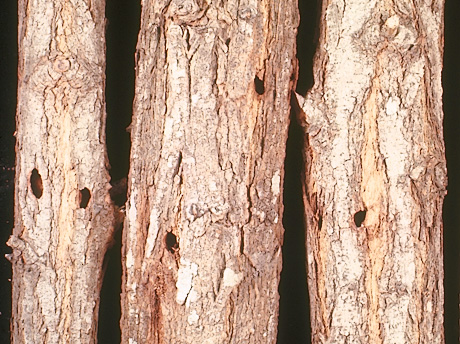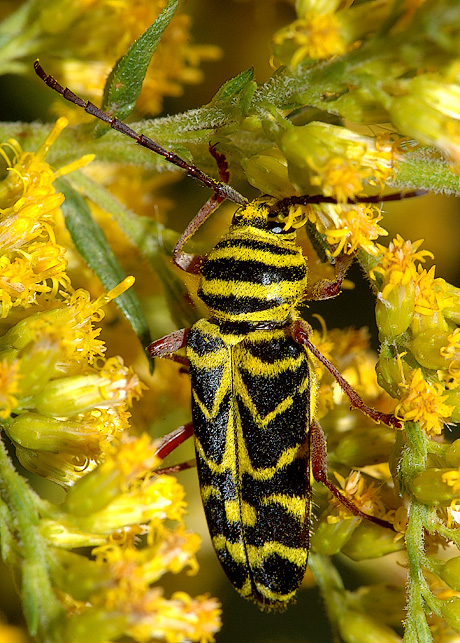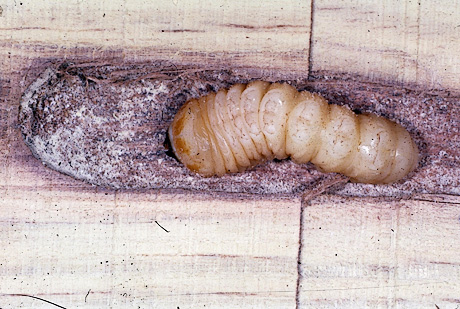
Locust Borer Control in Fort Collins
Damage caused by locust borers
The locust borer most often attacks the black locust tree and is considered a serious pest of the black locust, but it also attacks other species of locust. Trees that are already stressed trees may be killed. Larvae tunnels weaken the trunk and branches, making them more susceptible to wind damage. They also cause twig and branch die back. Black locust trees try to heal the damage caused by the larvae, creating swellings on the branches and trunk. Older trees (diameter greater than 8") and healthier trees are less susceptible to locust borers, but even they can be killed by severe infestations.
 James Solomon, USDA Forest Service, Bugwood.org
James Solomon, USDA Forest Service, Bugwood.org
How to identify locust borers
Locust borer eggs are small white ovals, laid singly or in groups of 6-8. Newly hatched larvae are creamy white and about 3/4" long. Mature Larvae are white, distinctly segmented and hairless with a reddish-brown head. They are about 1" long and 1/4" in diameter. The adult locust borer is a slender long-horned beetle, about 3/4" long, with reddish legs and black antennae, bright yellow bands on black body, and a W-shaped yellow marking on the wing covers.
 Susan Ellis, Bugwood.org
Susan Ellis, Bugwood.org
Life cycle of the locust borers
Adult locust borers appear when goldenrod is in bloom, in September. They feed on goldenrod and rabbitbrush pollen. The locust borers mate on the locust tree trunk. Then the females lay 100-200 eggs in late August to early October, under bark scales, in tree wounds, or in cracks in the bark. These eggs hatch in about a week. The larvae tunnel into the inner bark and create a hibernation cell where it overwinters. In early spring, the larvae move into the sapwood where they continue eating through the summer. They push the white boring dust out of their tunnels. In the late summer, the larvae tunnel into the heartwood and push yellow boring dust out their holes. By mid-July the larvae will reach full size and start to pupate. About the end of July, the mature beetles exit the tree through the tunnels made by the larvae.
 Lacy L. Hyche, Auburn University, Bugwood.org
Lacy L. Hyche, Auburn University, Bugwood.org
How to control the locust borers
Older more healthy trees aren't damaged by locust borers very often. Woodpeckers and other predators eat many of the locust borers. You may have to apply a pesticide if your black locust tree is young, stressed or there are just too many locust borers in the area. Spray pesticide on trunks and limbs in the spring to kill young larvae living under the bark. Spray pesticide in late summer to kill newly hatched larvae.
 Lacy L. Hyche, Auburn University, Bugwood.org
Lacy L. Hyche, Auburn University, Bugwood.org
Other resources





